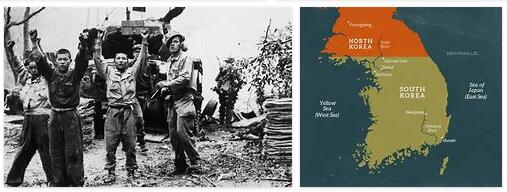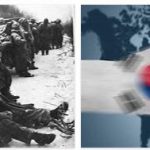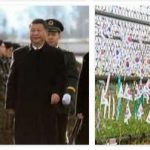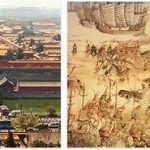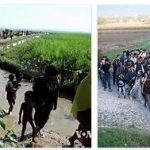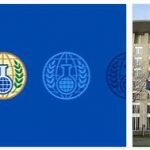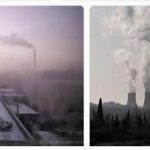5: The conflict escalates
The conflict took another serious turn on 7 March 2013. At that time, the Security Council adopted new sanctions in response to the nuclear test on 12 February. North Korea then withdrew from the ceasefire agreement, cut the military communications line to Seoul, and used an even more threatening language than before.
Part of the explanation may be that several incidents , each of which tends to provoke North Korean reactions, coincided in time : the Security Council’s decision came at the same time as Korean-American military exercises, which North Korea considers to be preparations for an attack. In addition, a new president had just been installed in South Korea, and North Korea has been in the habit of “trying” new South Korean presidents by ” softening them up .” Perhaps more important is that Kim Jong-un is trying to strengthen his position internally by appearing as a strong-willed and fearless leader.
North Korea has not been alone in raising tensions. When the United States sent B-2 bombers (difficult to detect on radar) to South Korea to practice attacks on ground targets, Kim Jong-un said that there was a state of war on the peninsula. B-2 was used in the first waves of attacks against the rest of Yugoslavia, Afghanistan and Iraq. For an anxious regime, this was a particularly disturbing move.
Under the young Kim, the regime has declared that it will prioritize the nuclear arsenal; it is reportedly not negotiable . The arsenal can only be dismantled if the threat to the country disappears. In addition, the country has a constitution that states that it is a nuclear-armed state.
6: More for civilian purposes
North Korea now appears to be focusing on nuclear deterrence in order to reduce its resource-intensive conventional forces. Thus, money can be released and transferred to the civilian sector , where agriculture and consumer goods will be prioritized. Kim has introduced several market elements in the economy and relations with China have grown, despite the sanctions. There does not have to be any contradiction between increased investment in nuclear weapons and improvement of the economy. Kim Jong-un says he is betting on both. A reform-minded politician has been appointed prime minister.
In foreign policy, the thinking seems to be that one can get the United States to speak by creating a situation that is so dangerous that “everyone” must understand that it can not continue like this. Once again, North Korea is trying to threaten the negotiating table. They have succeeded in this before. The investment in nuclear weapons is now referred to as the lifebuoy for the North Korean state.
In terms of security policy, the rationale is deterrence – like all other nuclear powers. Domestically, the argument is that nuclear explosive power is cheaper than conventional gunpowder – also a well-known argument from other nuclear powers.
7: How to understand North Korea’s foreign policy?
Those who claim that the goal has always been nuclear weapons, can not explain why all recycling of plutonium was stopped in 1991 and was not resumed until 2003. Nor that the recycling stopped in 2007 and was resumed in 2009. In other words, the country has produced far less plutonium than it could have done. Had it exploited its full potential in the early 1990s to produce weapons, it could have had over 100 nuclear charges today. Instead, it may have 4-8.
Others emphasize that North Korea demands compensation for crises it creates. In 1994, the crisis was resolved in an agreement that would provide North Korea with two large, expensive light water reactors (when the agreement broke down, the reactors were far from complete). On paper, it was a great success for the North Koreans. The nuclear test in 2006 also paid off financially through the agreements entered into in 2007.
Furthermore, North Korea’s nuclear program has been an important source of export earnings . Rocket technology has gone to Pakistan, Myanmar and several countries in the Middle East, and nuclear technology to Libya, probably to Syria and perhaps to Myanmar.
A fourth interpretation emphasizes that the North Koreans have always reciprocated cooperation, and when the United States has ignored them or broken agreements, they have reacted with violent proposals in a familiar style. Because the Americans have also taken liberties. In the summer of 2008, the United States had promised to remove North Korea from the list of states that support terrorism. However, when the United States did not do so, the North Koreans halted the agreed dismantling of the plutonium plants and began rebuilding them. A little later, the downsizing was resumed after the United States still removed them from the list.
In the autumn of 2008, the United States tried to change the agreed control provisions. According to FASHIONISSUPREME.COM, North Korea responded by conducting a new test of the long-range rocket Taepodong 2. When the Security Council condemned the test and adopted new sanctions, North Korea conducted a new nuclear test in the spring of 2009. In the international media picture, it usually starts with North Korean breaches of agreement, for media North Korea is wild. Most journalists ask “what have they come up with again now, then” – even when there are others who have not done as agreed.
Regardless: We are now in the fifth year without negotiations and agreements, and in such periods the problem grows: In 2002-2007, the North Koreans produced nuclear charges based on plutonium, and now they are building a capacity to produce charges based on enriched uranium. At the same time, the desire for light water reactors (to produce energy for civilian purposes) is deep. First they tried to get such reactors from the Soviet Union, then from the partners in the framework agreement of 1994, and now they are trying on their own. This means that they are in the process of establishing themselves on the same platform as Iran – with an enrichment program that has a peaceful rationale, but which is at the same time relevant to weapons .
The difference is that North Korea already has bombs with a deterrent effect that, in the opinion of many, keeps the enemies alive. Saddam Hussein’s Iraq and Muammar Gaddafi’s Libya did not have such weapons and were attacked. Today, Israeli leaders speak the same language when they say that if Iran gets nuclear weapons, there is not much we can do with them anymore.
